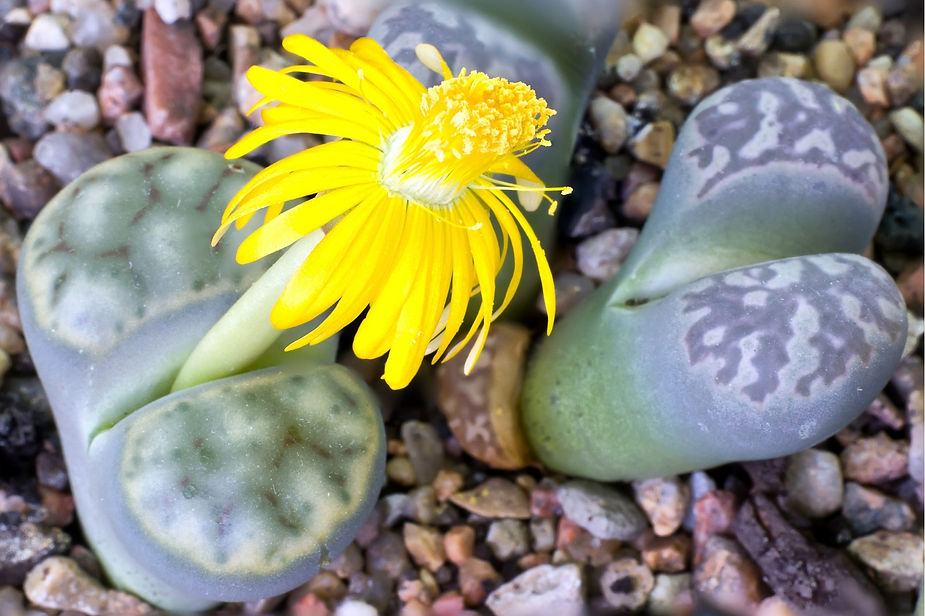Here's the deal with lithops "living stones"
They are so much more than cute little rainbow bum
Lithops are one of those plants you simply must see to believe. Nicknamed the "Living Stone" due to their uncanny resemblance to pebbles,
these peculiar little succulents are native to southern Africa. These mimicry plants thrive in harsh, compacted soil and can take the full
brunt of desert conditions, which means that as houseplants, they're great for small containers and require very little maintenance.
We LOVE lithops! We're obsessed!
As each plant is a little bit different, Lithops are a must for your collection of arid oddballs in New Zealand. We also run workshops
at NODE where we plant up little lithop gardens. Here's everything you need to know about them.
Lithops are not like other houseplants
When one looks at a lithops, all that’s visible above the ground’s surface is usually a pair of fleshy, succulent leaves that look like
stones, with a crevice between them. They also look like pebbles, hooves, or our favorite, bums. The majority of the plant is beneath the
soil surface.
So the plant you're looking at basically just leaves. The weirdest leaves you've ever seen.
Their care requirement is also different from other houseplants, mostly around watering. These succulents have window-like cells on the leaf
surfaces that allow light deep into the plant to aid in photosynthesis. The main taproot is the most important for the plant’s survival, but
a series of finer roots also help draw in extra nutrition when needed.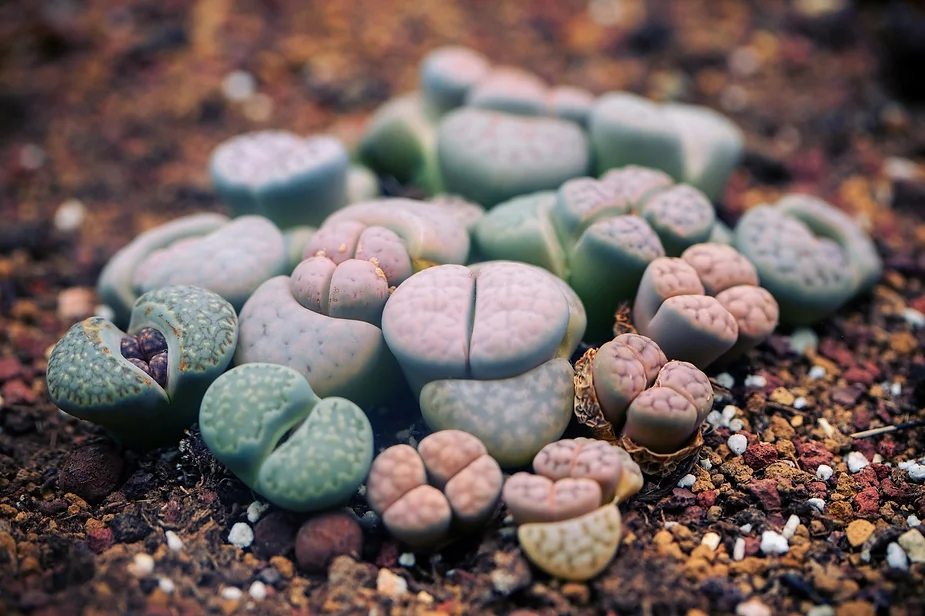
Soil mediums for lithops
It is best for Lithops to be planted in a cactus mix or fast-draining potting soil. Sand, pebbles, or other gritty materials can also be
added to help with soil drainage. We often use 90% non-organic including fine pumice or propagation sand and then 10% organic including
potting mix or cactus mix.
Light requirements for lithops
Lithops have adapted to tolerate harsh sunlight in their native environment in the deserts of Africa. Thus, the best way to care for them
would be to provide 4-5 hours of early sunlight, and partial shade in the afternoon. A south or east window with optimum light is an ideal
place for your Lithops.
Remember, insufficient sunlight can cause elongated leaves and lost patterns.
Although they are sun-lover, intense heat can damage their foliage and cause sunburn. Be sure to place them in less sunny spots or cover
them up if you find their containers absorb too much heat in the summer afternoon.
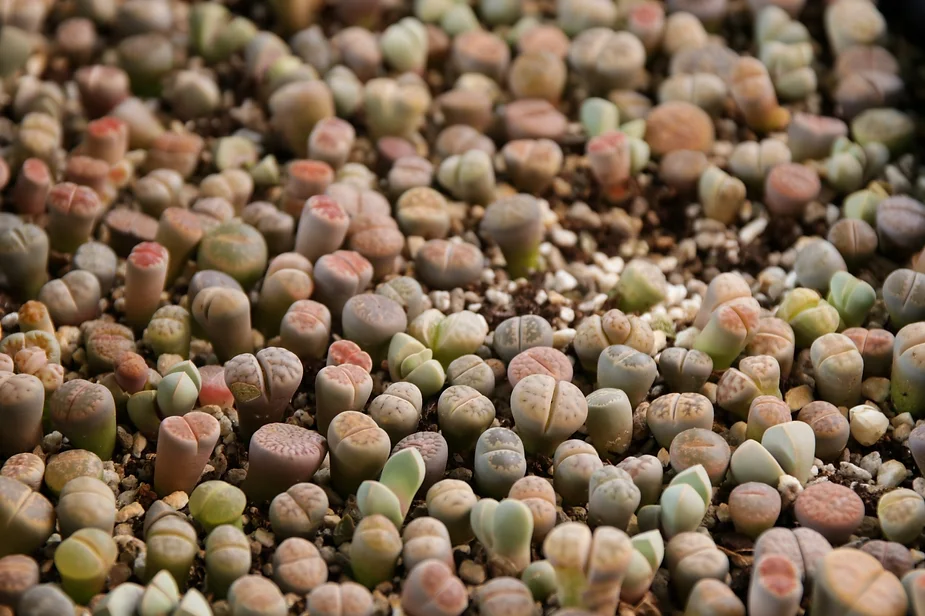
Fertilize once a year
Due to being planted in mainly non-organic media, only fertilize with a very small amount of fertilizer, usually just yearly and ideally in
spring.
Avoid humidity
If your plant seems happy without water during the spring and fall, then don’t water it. Chances are that it’s getting enough moisture from
the humidity in the air. Many species of lithops draw the majority of their moisture from dew or humid air. We've found that lithops don't
like the additional humidity we often provide for our tropical houseplants, but can tolerate it in bursts.
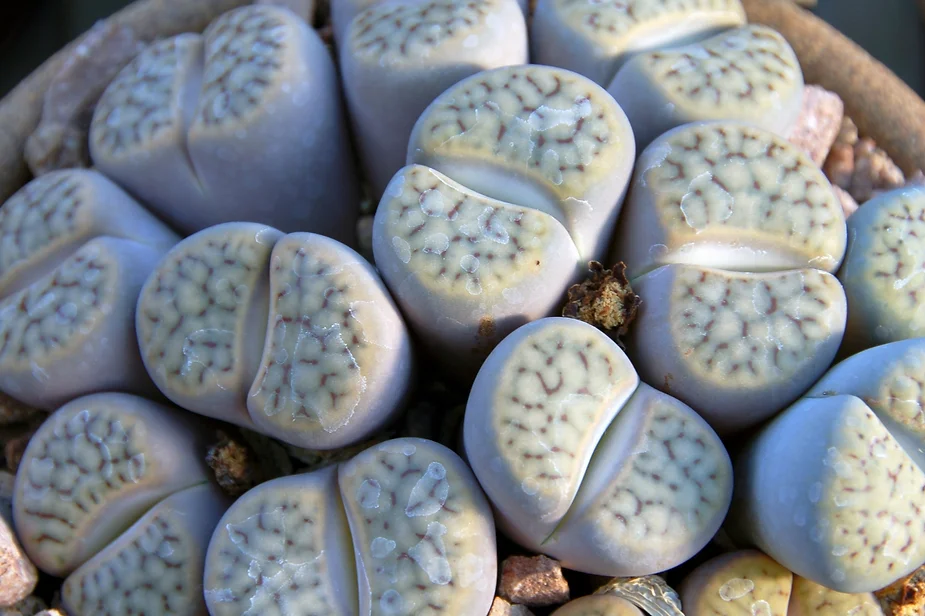
Watering care for lithops - pay attention!
As Lithops have the capacity to store water for months in their leaves, overwatering can lead to puffy plants, and even to their demise.
Also, remember they thrive in desert conditions with infrequent moisture and intense sunlight. Therefore, mimicking Lithop growing
conditions is important to keep them healthy.
Underwatering, however, can result in stunted plants. The trick is to water only when the soil is thoroughly dry (test by inserting a wooden
skewer into the soil, and check if it's moist when removed).
When Lithops are growing new leaves, it's best to leave them and not water until the old pair of leaves are completely dried up and
withered. This normally happens after their dormant season, which is around spring to early fall. Once the days get shorter and the
temperature get cooler in fall, the plants will be active again.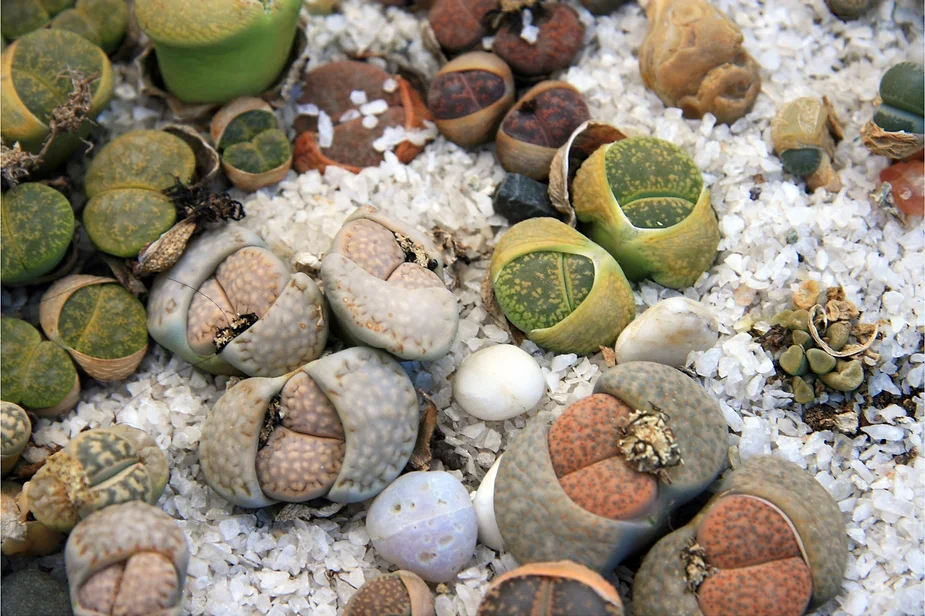
They flower in the autumn
How cool is that? Most Lithops need to be at least 3 years old before they’ll flower. They usually bloom sometime between late summer
through fall. A single flower will be pushed up from the crevice between the pair of leaves. However, only plants older than 3 years (and
sometimes 5 years) will produce flowers.
The lithops flower is daisy-like in appearance, and depending on the species can be anywhere from a half-inch to an inch and a half in
diameter. It can be orange, white, or pale yellow. Some have a scent that is described as spicy-sweet. These flowers will open in the early
afternoon to soak in sunlight and allow for pollination, and then will close in the late afternoon before dusk. As lithops is not
self-pollinating, they are reliant on insect pollinators or humans to produce seed.
After their flowers fade, they begin growing a new plant beneath the outer leaves, but you can’t see it yet. Now the plant will go dormant.
During this time, it starts to form a new body. When it begins to grow again, the new leaf pair will emerge from the crevice between the old
leaves.
Shop all lithops here.
